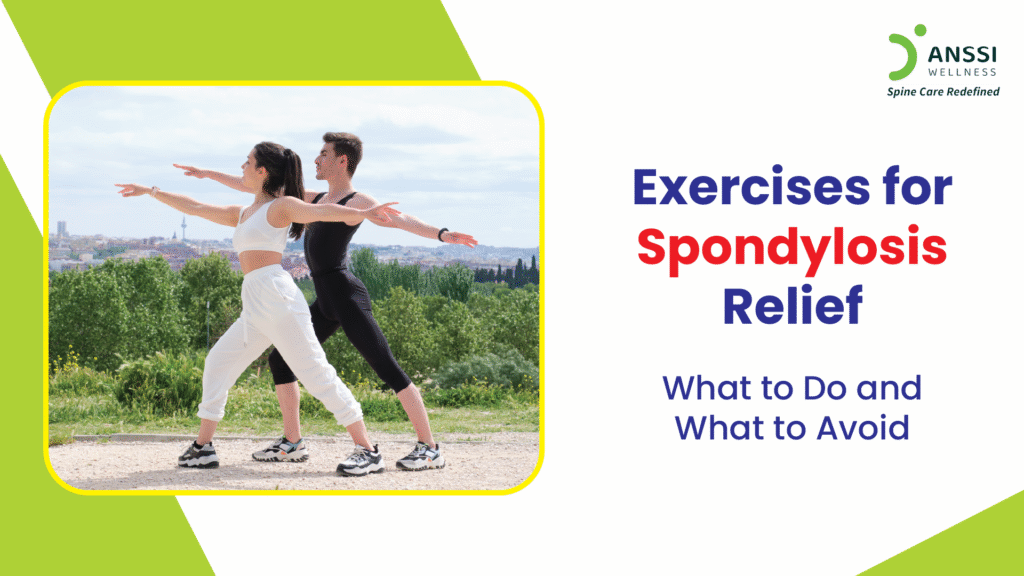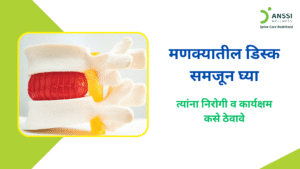Spondylosis, a common degenerative condition of the spine, affects millions of people worldwide. Whether it’s stiffness in the neck, aching in the back, or reduced flexibility, the symptoms can interfere with daily life. While medications and therapies play their role, exercise is one of the most effective non-surgical ways to manage spondylosis.
However, not all exercises are safe, and some can even make the condition worse. Knowing what to do and what to avoid can help you find relief while protecting your spine.
Understanding Spondylosis and Its Impact
Spondylosis refers to the wear-and-tear changes in the spinal discs, joints, and bones. These changes can lead to pain, reduced range of motion, and stiffness. Poor posture, ageing, and sedentary lifestyles often aggravate the condition.
Best Exercises for Spondylosis Relief (What to Do)
Exercise is vital because it strengthens the muscles that support the spine, improves blood flow, and reduces stiffness. But choosing the right type of exercise is just as important as staying active.
1. Neck Stretches
For cervical spondylosis, gentle neck stretches can be highly effective. Slowly tilt your head from side to side or rotate it in a controlled manner. This helps relieve stiffness, improve mobility, and ease tension.
2. Shoulder Rolls and Shrugs
Poor posture often contributes to neck and upper back strain. Shoulder rolls and shrugs help open up the chest, relax tense muscles, and improve posture.
3. Cat-Cow Stretch
This simple yoga-inspired movement is excellent for mobilising the spine. By arching and rounding the back slowly in a tabletop position, you encourage flexibility and reduce stiffness in the spine.
4. Pelvic Tilts
For lumbar spondylosis, pelvic tilts strengthen the core and lower back muscles. Lie flat on your back with knees bent, tighten your stomach muscles, and press your lower back into the floor. This builds strength and relieves lower back pain.
5. Walking and Low-Impact Aerobics
Walking is a safe, effective way to stay active without straining the spine. Gentle low-impact exercises like swimming or stationary cycling also improve circulation, which supports disc and joint health.
Tip: Perform all exercises slowly, with controlled movements. Consistency matters more than intensity.
Exercises and Movements to Avoid
While staying active is important, certain activities can worsen spondylosis symptoms.
1. High-Impact Activities
Running, jumping, or intense aerobic workouts put unnecessary stress on the spine. These can lead to further wear and tear, worsening pain.
2. Heavy Weightlifting
Lifting heavy weights, especially with improper form, increases pressure on the discs and joints. Unless supervised by a physiotherapist, avoid deadlifts, squats, or overhead presses.
3. Extreme Forward Bends or Twisting
Movements such as deep yoga forward bends or sudden twisting motions strain the spine and may worsen disc-related issues.
4. Jerky, Fast Movements
Spondylosis requires slow, controlled movement. Jerky or rapid motions can trigger muscle spasms and exacerbate pain.
Tips for Safe Practice
- Warm up and cool down: Always prepare your muscles before exercise and stretch afterward to prevent stiffness.
- Listen to your body: If a movement causes sharp pain, stop immediately. Discomfort is normal, but pain is not.
- Stay consistent: Gentle daily exercise is better than occasional intense workouts.
- Consult a physiotherapist: Personalised guidance ensures that your exercises are safe and effective for your condition.
About ANSSI:
ANSSI Wellness focuses on improving the quality of life for patients suffering from spinal issues, aiming to provide relief where other conventional treatments have failed. Through advanced Non-Surgical Spinal Decompression Treatment, ANSSI is committed to helping patients avoid surgery and recover in a safe, effective, and compassionate environment.
Connect with ANSSI Wellness on LinkedIn, Instagram, and Facebook for expert guidance.




